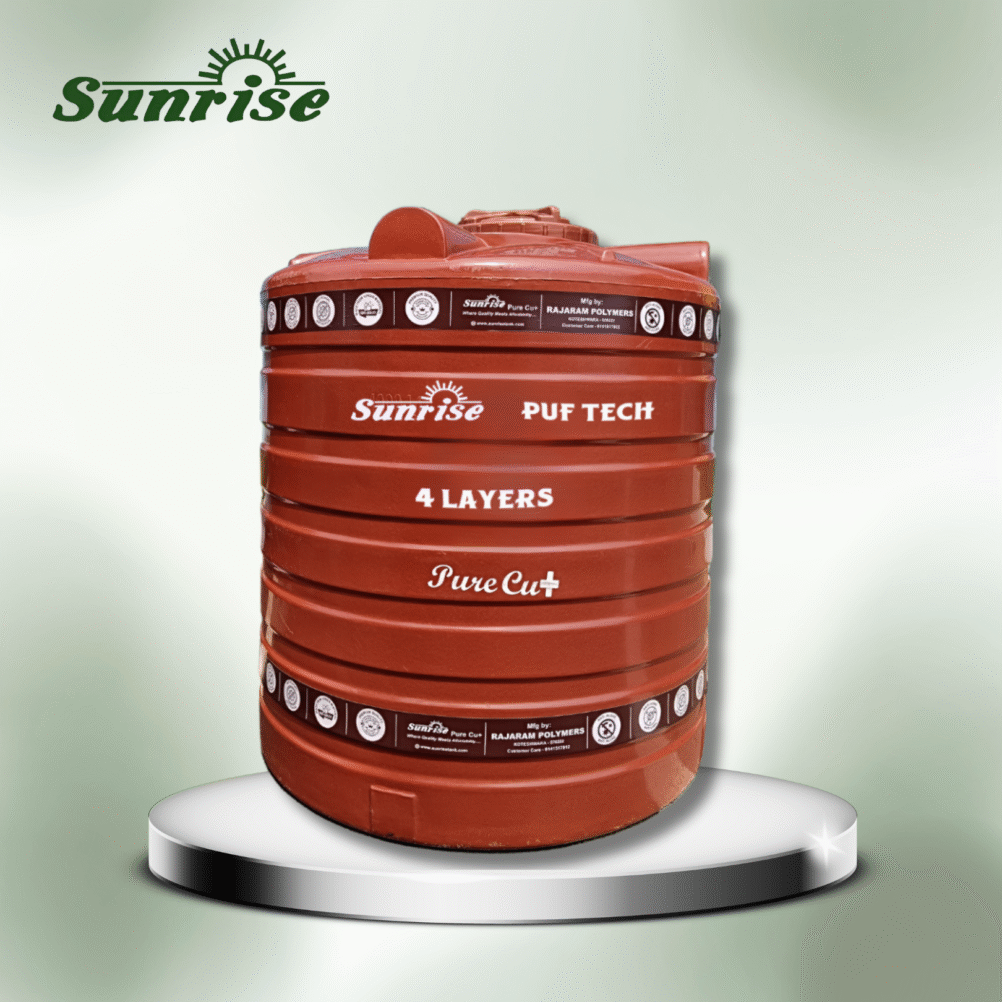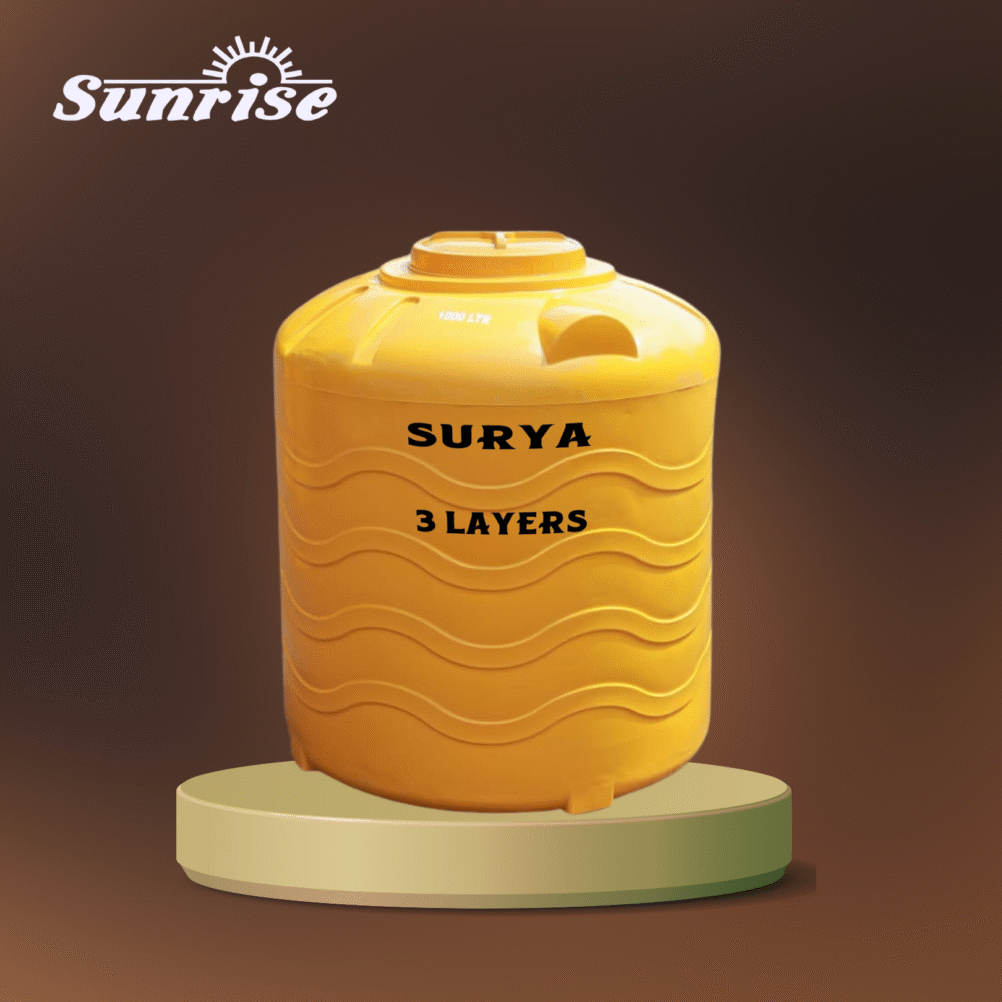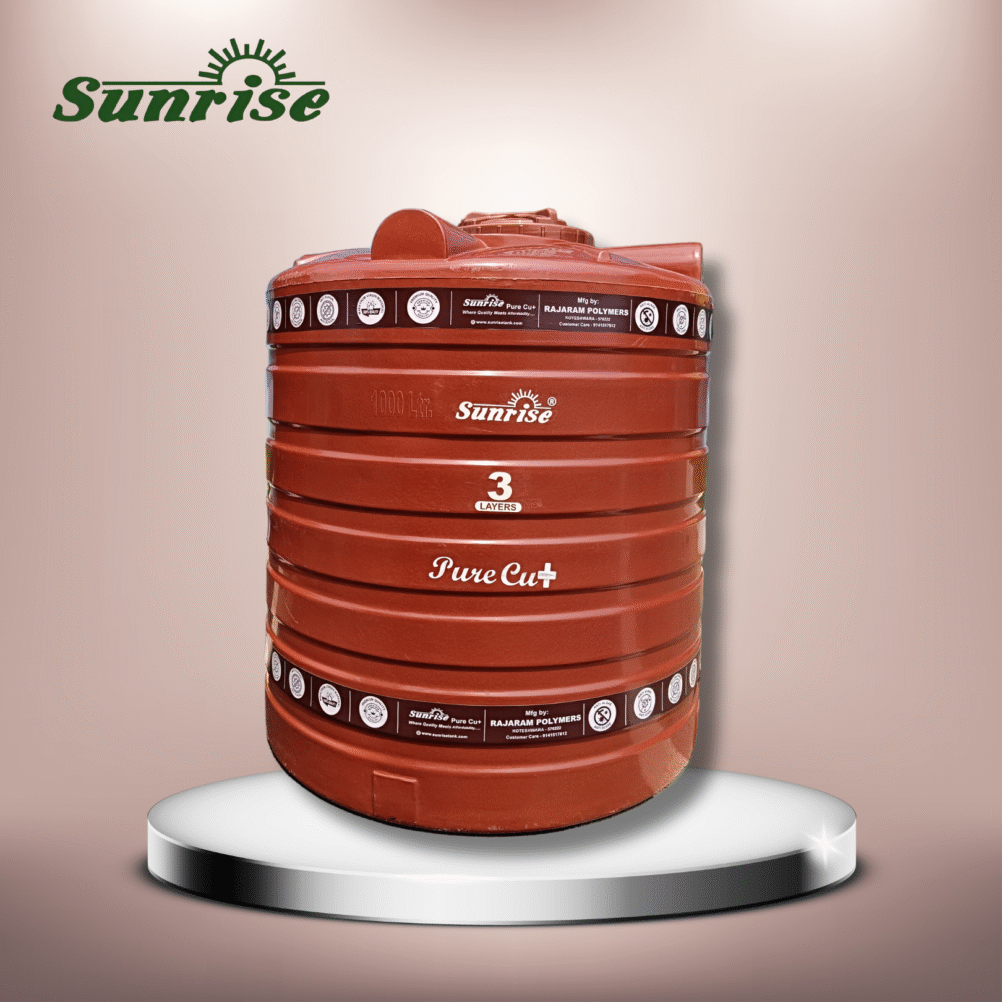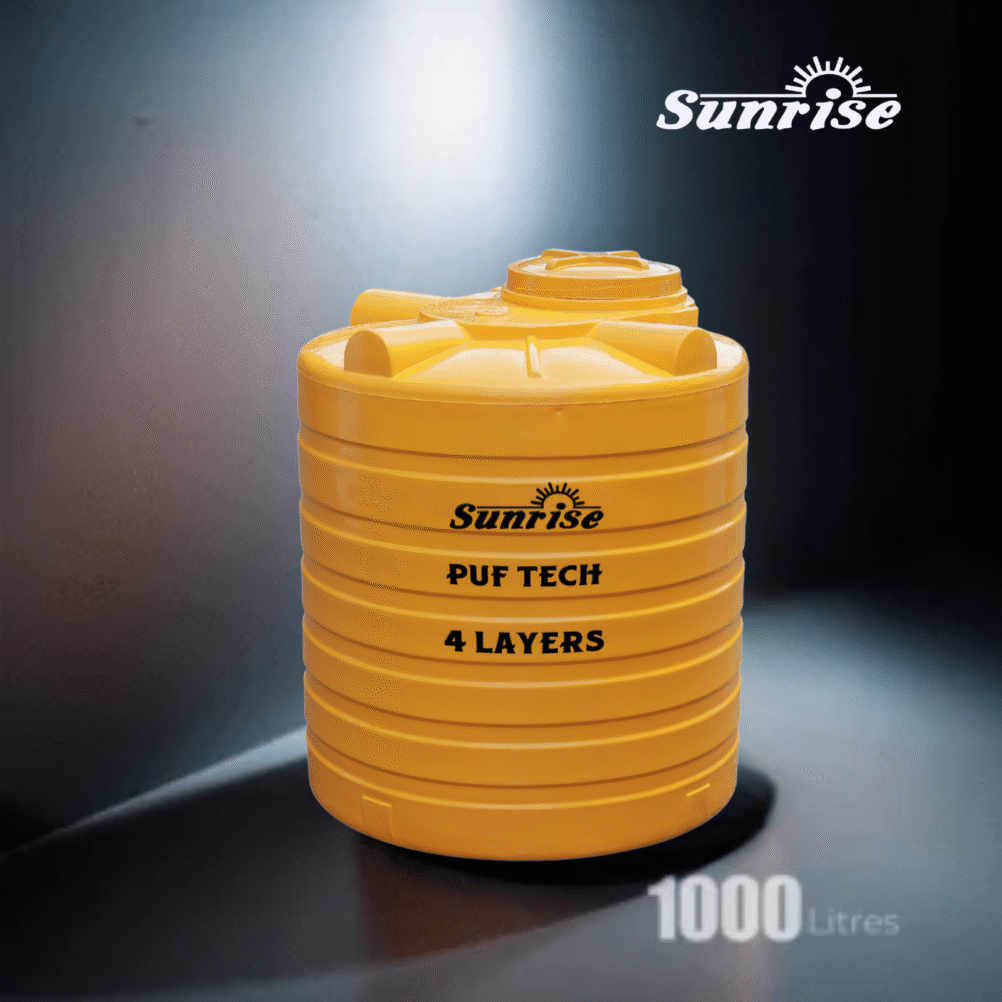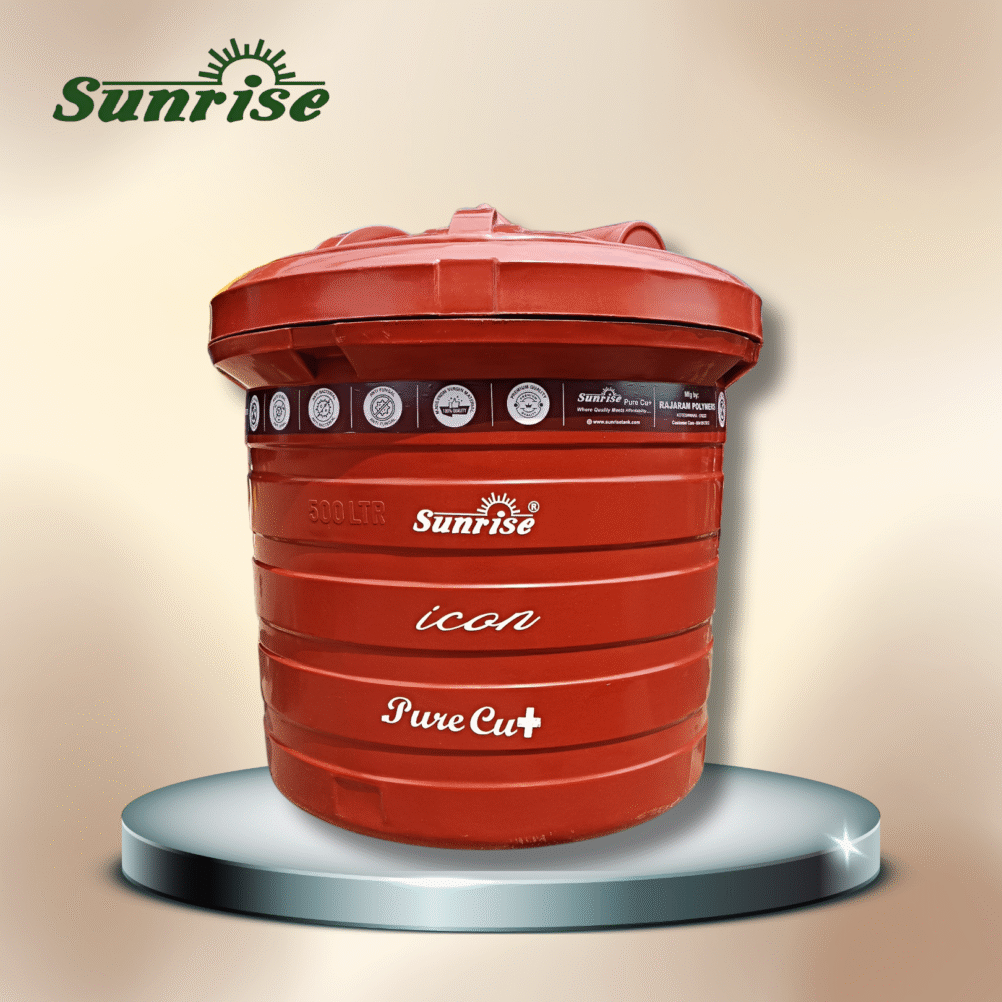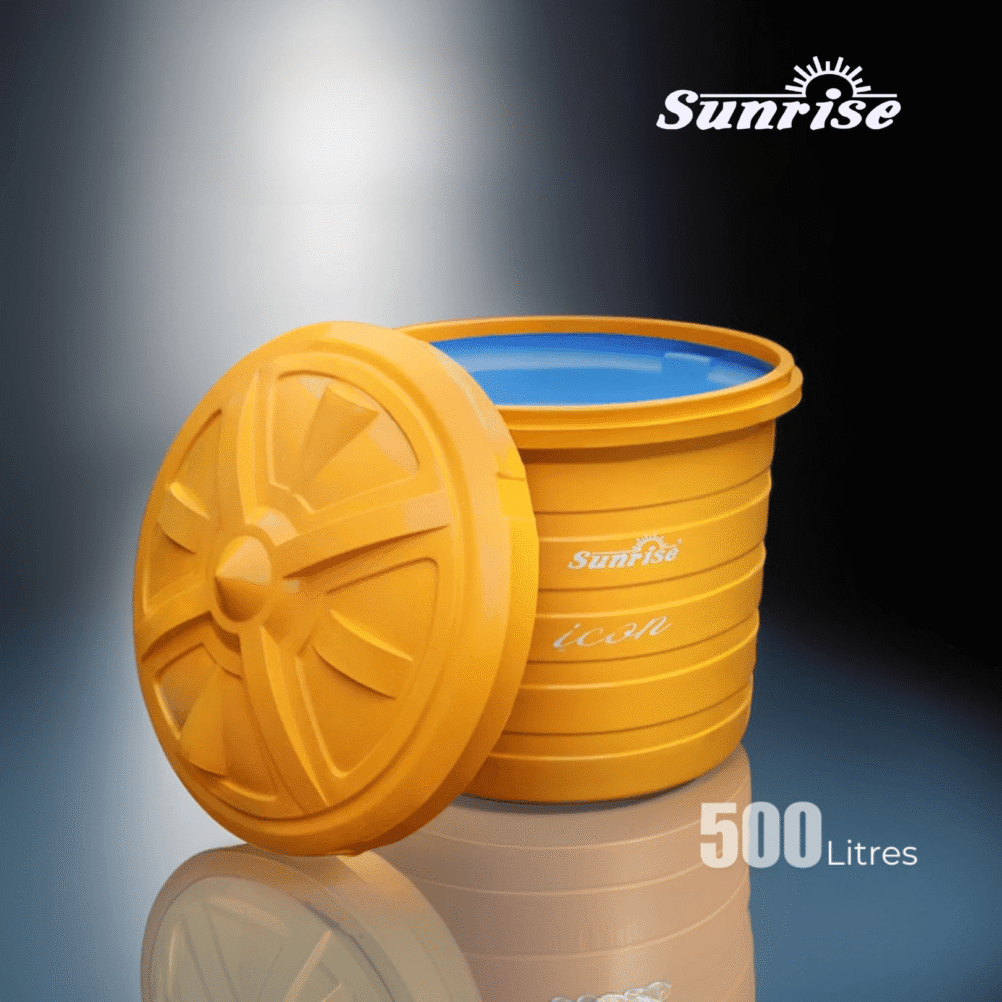Different Types of Water Storage Tanks
Water is an essential resource for everyday life, and having a reliable method of storing it is essential. They provide a safe and reliable way to store water for long-term use. They help in providing water for drinking, cleaning, gardening, and other needs. There are different types sunrise water tanks available in the market to suit different requirements in terms of size and capacity and also budgets. With the right type of water storage tank, you can ensure that your family or business has access to clean and safe drinking water.
Types of water storage tanks
1)Vertical water storage tanks

2) Multi-purpose water storage tanks
3)Horizontal water storage tanks

Vertical water storage tanks
These are large-capacity containers that are designed to store water for the household, agricultural, irrigation, and industrial manufacturing use. There are different kinds of sunrise water tanks available that serve different purposes. These are made out of LLDPE material. There are available in 2 varieties generally 3 layers and 4 layers.
Uses
- Water storage: These are used to store potable water and for fire protection systems and irrigation.
- Rainwater harvesting: These are used to collect and store rainwater for later use in irrigation or other applications.
- Wastewater treatment: These are used in the treatment of wastewater, where they are used for the storage and settling of solids before it is discharged.
- Agriculture: These are used to store animal feed, fertilizers, and other agricultural chemicals.
- Industrial: These are used to store chemicals, fuel, and other industrial liquids.
- Emergency water supply: In case of a natural disaster, these can be used to store and distribute emergency water supply for people and animals.
- Reduces money and space: With a vertical storage tank, you can take advantage of gravity to reduce energy costs associated with pumping water. Additionally, these tanks can reduce the amount of space needed to store, making them ideal for residential and commercial applications.
- Others: Some other purposes like potable or non-potable water storage, fire suppression systems, slurry and sludge storage, and greywater storage.
Advantages
- Space efficiency: They take up less space than horizontal water tanks of the same capacity, making them ideal for small or densely populated areas.
- Cost-effectiveness: They are typically cheaper to manufacture and transport than horizontal water tanks.
- Durability: They are made from durable materials and are less likely to leak or rupture due to their design
- Easy maintenance: They are easy to inspect and maintain, which helps to ensure they remain in good working condition.
- Flexibility: They can be used for a variety of purposes, including water storage, fire protection, and irrigation.
- Safety: They are less likely to tip over compared to horizontal water tanks, reducing the risk of injury or damage.

Disadvantages
- Limited capacity: They have a smaller capacity than horizontal water tanks of the same size, which means they need to be refilled more frequently.
- Limited access: They are not as easy to access as horizontal water tanks, which can make it more difficult to inspect or maintain them.
- Limited uses: They are not suitable for certain types of applications, such as those that require a large volume of water to be stored or pumped out at one time.
- Limited mixing: They are not as effective at mixing the contents of the tank as horizontal water tanks, which can lead to stratification.
- Limited options: They have limited options for the type of material they can be made of which will limit the durability and life span of the tank.
- Limited space: They may not fit in all the locations where horizontal water tanks can.
- Limited mobility: They are typically more difficult to move than horizontal water tanks, which can be an issue if their location needs to be changed.
a)Vertical 3-layer water storage tanks:
Vertical 3 layer water storage tanks have three layers of material, with the inner and outer layers typically made of plastic and the middle layer made of a material such as foam insulation.Vertical 3 layer water tanks are designed to provide increased insulation and protection against the elements, which helps to keep the water in the tank at a more stable temperature and reduces the risk of freezing.
Advantages:
- Increased insulation: The middle insulation layer of Vertical 3 layer water tanks helps to keep the water in the tank at a more stable temperature and reduces the risk of freezing.
- Energy efficiency: The insulation layer of Vertical 3 layer water tanks helps to reduce the amount of energy required to heat or cool the water in the tank.
- Durability: The three layers of material provided in Vertical 3 layer water tanks added protection against leaks, punctures, and other types of damage.
Disadvantages:
- Cost: Vertical 3 layer water tanks are typically more expensive to purchase and install than single-layer tank.
- Complexity: The three layers of material used in Vertical 3 layer water tanks can make it more difficult to inspect or repair the tank if there is a problem.
- Limited mobility: Vertical 3 layer water tanks are typically more difficult to move than single-layer tank due to their weight
b) Vertical 4-layer water storage tanks:
Vertical 4-layer water tanks are similar to that of a 3 layers tank with an extra layer. The fourth layer is the UV protection layer. Vertical 4-layer water storage tanks are designed to provide increased insulation and protection against the elements, as well as UV radiation, which helps to keep the water in the tank at a more stable temperature and reduces the risk of freezing and algae growth.
Advantages
- Increased insulation: The middle insulation layer of Vertical 4-layer water tanks helps to keep the water in the tank at a more stable temperature and reduces the risk of freezing.
- UV protection: The UV protection layer of Vertical 4-layer water tanks helps to prevent algae growth in the tank
- Energy efficiency: The insulation layer of Vertical 4-layer water tanks helps to reduce the amount of energy required to heat or cool the water in the tank.
- Durability: The four layers material of Vertical 4-layer water tanks provide added protection against leaks, punctures, and other types of damage.
Disadvantages
- Cost: Vertical 4-layer water tanks are typically more expensive to purchase and install than single-layer or 3-layer tanks.
- Complexity: The four layers of material of Vertical 4-layer water tanks can make it more difficult to inspect or repair the tank if there is a problem.
- Limited mobility: Vertical 4-layer water tanks are typically more difficult to move than single-layer or vertical 3-layer tanks due to their weight.
Multi-purpose water storage tanks
Multi-purpose water tanks are tanks that can be used for a variety of different purposes, including storing potable water, irrigation, fire protection, and rainwater harvesting.Multi-purpose water tanks are designed to be versatile and flexible and can be used in a variety of settings, such as residential, commercial, and industrial.
Uses
- Multi-purpose water storage tanks and horizontal water storage tanks are commonly used in a variety of applications such as agricultural, residential, and commercial.
- In agricultural application- they can be used to store water for irrigation, livestock, and other farming activities.
- In residential application- they are commonly used for rainwater harvesting, storing water for gardening and landscaping, and other outdoor activities.
- In commercial application- Multi-purpose water tanks are used for water supply, fire protection, and other industrial uses. Additionally, many storage tanks are designed to be easily portable, allowing them to be moved to different locations as needed.
Advantages
- Versatility: Multi-purpose water tanks can be used for a variety of different purposes, which makes them a cost-effective option for many different applications.
- Flexibility: Multi-purpose water tanks can be used in a variety of settings, such as residential, commercial, and industrial.
- Easy maintenance: Multi-purpose water tanks are easy to inspect and maintain, which helps to ensure they remain in good working condition.
Disadvantages
- Limited capacity: Multi-purpose water tanks may not have as large of a capacity as some other types of tanks.
- Limited specific features: Multi-purpose water tanks may not have the same features as tanks designed specifically for a particular purpose.
- Limited options: Multi-purpose water tanks may not have as many options in terms of materials or sizes as other types of tanks.
Horizontal water storage tanks
Horizontal water tanks are designed to be placed horizontally, rather than vertically. They typically have a cylindrical shape and can be made from a variety of materials, such as plastic, steel, or concrete.
Uses
- storing rainwater for garden and lawn irrigation,
- providing a backup water supply for fire suppression systems,
- storing water for livestock and other agricultural purposes.
- Horizontal water tanks can also be used to store water for human consumption, such as drinking or to be used for cooking and bathing.
- Horizontal water storage tanks are also used in septic systems to collect and store wastewater before it is sent to a treatment plant.
Advantages
- Capacity: Horizontal water tanks have a larger capacity than vertical tanks of the same size.
- Easy access: Horizontal water tanks are easy to access, which makes it more convenient to inspect or maintain the tank.
- Mixing: Horizontal water tanks are more effective at mixing the contents of the tank, which helps to prevent stratification.

Disadvantages
- Space: Horizontal water tanks take up more space than vertical tanks of the same capacity.
- Cost: Horizontal water tanks are typically more expensive to manufacture and transport than vertical tanks.
- Stability: Horizontal water tanks are more likely to tip over compared to vertical tanks, which can increase the risk of injury or damage.


